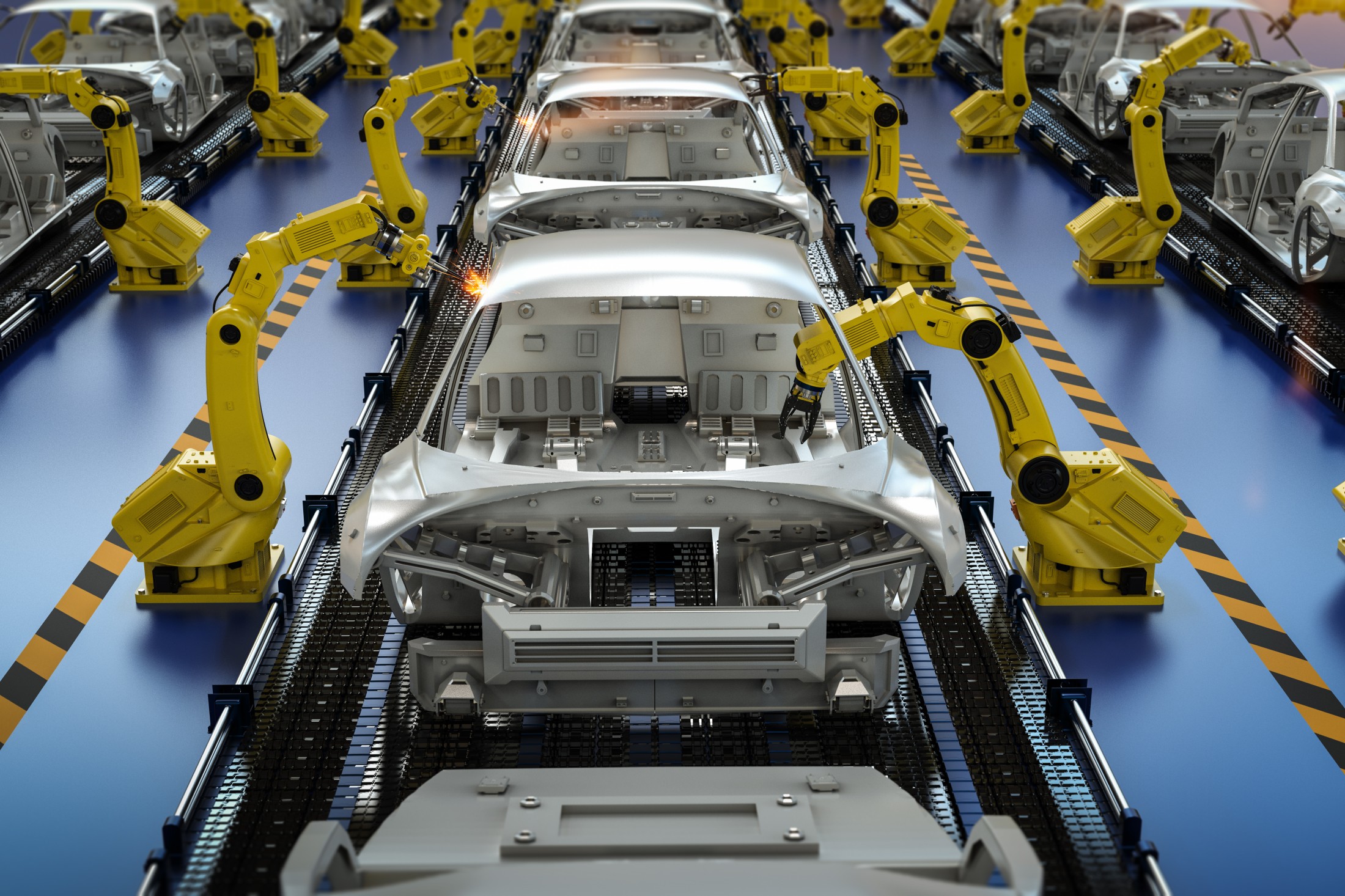The Future of Passenger Vehicle Manufacturing: Innovations Driving Comfort and Safety

The journey of passenger vehicle manufacturing has evolved from Henry Ford's assembly line to today’s smart factories powered by artificial intelligence. This transformation isn’t just technological—it reflects a deeper commitment to sustainability, safety, and consumer-centric innovation. As vehicles become more connected, sustainable, and intelligent, manufacturers are redesigning their processes to stay competitive in an era defined by rapid change and high consumer expectations.
The days when consumers prioritized engine power alone are long gone. Today, their priorities include:
Comfort: Ventilated seats with memory settings, noise-canceling cabins, and customizable ambient lighting.
Safety: Beyond airbags and ABS, consumers want proactive features such as pedestrian detection and driver fatigue monitoring.
Connectivity: Integration with digital assistants like Alexa, remote monitoring via apps, and real-time navigation powered by cloud data.
Example: Tesla has set a benchmark by integrating over-the-air updates for its cars, allowing consumers to experience improvements without visiting a service center.
The production floor today is not just a place of assembly but a digital ecosystem that adapts to real-time demands. Here's how:
a. Robotics and Cobots in Assembly Lines:
Robots handle high-precision tasks like welding, painting, and fitting, reducing errors to nearly zero.
Collaborative robots (cobots) work alongside humans to optimize processes like dashboard assembly and final inspections.
Example: BMW’s Spartanburg plant in South Carolina uses cobots extensively, achieving high efficiency in custom configurations for its SUVs.
b. Additive Manufacturing (3D Printing):
From prototyping to producing complex parts, 3D printing is reducing lead times and material waste.
Lightweight materials, such as polymer composites, are now printed to ensure durability without adding weight.
c. Digital Twins for Real-Time Monitoring:
Digital twin technology creates a virtual replica of manufacturing processes, enabling real-time troubleshooting and predictive maintenance.
Example: Volkswagen uses digital twins to optimize energy consumption in its plants, cutting costs and emissions.
Reducing vehicle weight is crucial for fuel efficiency and compliance with emission standards. Innovations include:
Advanced Materials: High-strength steel, aluminum, and carbon fiber composites.
Structural Adhesives: Replacing traditional welding in certain areas to reduce weight and improve structural integrity.
Case Study: Audi’s Space Frame (ASF) technology uses a mix of aluminum and magnesium, reducing weight by up to 40% compared to traditional steel frames.
Modern manufacturing goes beyond crash tests and ABS systems. Here’s how:
Advanced Driver Assistance Systems (ADAS): Incorporating LIDAR, cameras, and radar to predict and prevent accidents.
Biometric Monitoring Systems: Scanning drivers for signs of fatigue or distraction.
Connected Safety Networks: Real-time communication between vehicles and infrastructure (V2I) ensures timely alerts about hazards.
Example: Volvo’s pilot project in Sweden connects cars to weather data systems, alerting drivers about icy conditions in real-time.
Automakers are investing heavily in reducing their environmental footprint:
Renewable Energy: Ford’s Rouge Center now runs almost entirely on solar and wind power.
Recycled Materials: BMW’s i3 model uses recycled fibers for interiors and carbon-fiber-reinforced plastic (CFRP) for the body.
Zero-Waste Factories: Toyota’s Kaizen model has led to near-zero waste in its manufacturing plants globally.
Key Insight: Consumers increasingly favor brands that align with their environmental values, making sustainability a business necessity.
While the future looks promising, the road is far from smooth:
Chip Shortages: A global semiconductor shortage continues to disrupt vehicle production.
Workforce Transformation: The shift to smart factories demands a workforce skilled in AI, robotics, and data analytics.
Global Regulations: Varying emission standards and safety regulations across countries create complexity in design and production.
AiDOOS empowers automakers to navigate these challenges with agility and precision:
Pre-Vetted Experts: Access a global pool of professionals for AI, robotics, and IoT integration.
On-Demand Teams: Scale operations seamlessly to handle spikes in production or R&D needs.
Custom SaaS Solutions: Optimize manufacturing workflows, predictive maintenance, and real-time analytics.
Passenger vehicle manufacturing is no longer just about building cars; it’s about creating a seamless ecosystem where technology, sustainability, and consumer preferences converge. As automakers embrace this transformation, platforms like AiDOOS provide the flexibility and expertise to lead the industry into the future.
Passenger vehicle manufacturing is at the forefront of innovation, focusing on integrating cutting-edge technologies to deliver unparalleled comfort and safety. Virtual Delivery Centers (VDCs) are pivotal in driving these advancements by fostering collaboration, optimizing processes, and enabling rapid innovation.
How VDCs Transform Passenger Vehicle Manufacturing:
Collaborative Innovation:
Connect global teams of designers, engineers, and technologists to co-develop state-of-the-art features.
Accelerate the design process through virtual prototyping and simulation, reducing time to market.
Enhanced Safety Features:
Leverage AI and IoT to integrate predictive safety systems, such as collision avoidance and adaptive cruise control.
Enable real-time testing and iterative improvements to ensure passenger safety at the highest standards.
Personalized Comfort Solutions:
Facilitate the incorporation of advanced ergonomic designs and AI-driven customization.
Optimize climate control, seating, and infotainment systems for a superior user experience.
Sustainability Goals:
Drive eco-friendly manufacturing practices by monitoring energy use and reducing waste.
Encourage the adoption of recyclable materials in production, aligning with green initiatives.
Smart Manufacturing:
Employ predictive maintenance and real-time monitoring across production lines to eliminate inefficiencies.
Integrate robotics and automation for precision and scalability.
Customer-Centric Development:
Use VDC platforms to gather and analyze customer feedback, ensuring that vehicles meet evolving consumer expectations.
Enable rapid prototyping of features tailored to specific market segments.
Why VDCs Are Essential for the Future:
Agility: Adapt quickly to changing industry standards and consumer preferences.
Cost-Efficiency: Minimize operational expenses while maximizing innovation output.
Scalability: Support increased production demands without compromising quality.
Conclusion:
Virtual Delivery Centers represent the next wave of transformation in passenger vehicle manufacturing. By embracing VDCs, manufacturers can seamlessly integrate innovation, comfort, and safety into their vehicles, setting new benchmarks in the automotive industry while catering to the modern consumer's demands.

For modern telecom enterprises, delivering exceptional QoS is no longer optional—it’s a brand differentiator and a strategic lever for growth. Static provisioning models won’t cut it in a world of hyper-dynamic data usage.